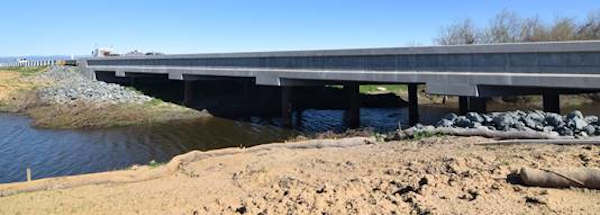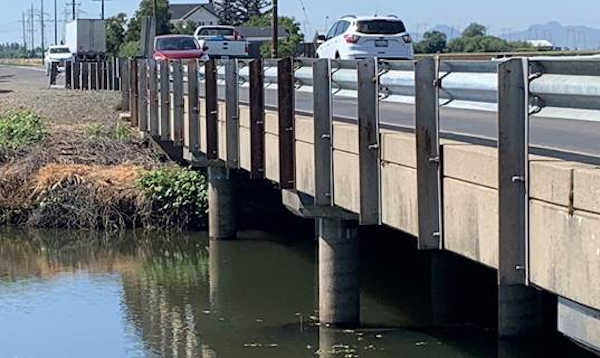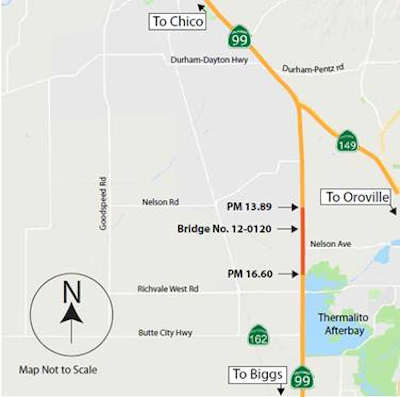- California Department of Fish and Wildlife
- Posted On
Prepare for bear activity in aftermath of the Caldor fire

LAKE TAHOE, Calif./Nev. — The Lake Tahoe Interagency Bear Team, a partnership between the California Department of Fish and Wildlife, California State Parks, Nevada Department of Wildlife, Tahoe Regional Planning Agency, and the USDA Forest Service, is asking all community members to expect increased bear activity following the Caldor Fire as bears prepare to emerge from their winter dens.
Generally, fire can be a revitalizing event for a forest, with downed logs providing great forage spots for hungry bears looking for insects such as termites and grubs.
Wild animals are typically resilient and able to adapt to fire and other environmental changes: It’s part of their nature.
However, during last year’s Caldor Fire, some bears and other wildlife were forced to flee from the flames.
While some bears were hit by vehicles on highways, others may have traveled to the Tahoe Basin for refuge, while many sheltered in large pockets of unburned forest or were temporarily displaced.
A black bear stands next to a South Lake Tahoe home it was attempting to enter. During the evacuation last fall, when streets and homes were empty and no one was around to secure houses, vehicles, dumpsters, or other attractants, habituated bears in the Tahoe Basin — meaning those bears already comfortable around people or those bears that look to people, their homes, and cars for food — were left to roam neighborhoods freely with little resistance. These habituated bears suddenly had no humans yelling, making noise, chasing or hazing them, and no electric deterrents because of power outages.
In the Tahoe Keys community, bears broke into garage doors, windows, and vehicles, causing some homeowners thousands of dollars in property damage (video). The lack of consequences during the evacuation period will have rippling and lasting effects on bear behavior for seasons to come.
Because bears are so intelligent, once they learn something, it’s difficult to break their bad habits. For this reason, it’s extremely important to be proactive in preventing bad habits from forming in the first place.
Due to the amount of damage bears caused to homes, the California Department of Fish and Wildlife last year conducted a Trap/Tag/Haze operation in South Lake Tahoe to provide relief to hard-hit areas, which allowed residents to begin repairs, replace doors, refrigerators, and other damaged items in order to move back into their homes.
Bears were marked and moved to nearby, unburned habitat in an attempt to interrupt the cycle of break-ins and food rewards that went unchecked during evacuations.
Once moved, these bears were hazed upon release with airhorns, paintball guns, and nonlethal rounds, to give the bears a negative human interaction that will hopefully prevent them from returning to the area.
Not all these problem bears were caught and hazed, as evidenced by the continued presence of several bears that continued to break into homes in the Tahoe Keys area throughout the fall and winter months.
While what happened during the Caldor Fire evacuation couldn’t be prevented, homeowners and visitors can do their part to prevent or deter this kind of bear behavior in the future, especially as this mild winter turns to spring and bears begin to emerge from their dens in search of food.
Below are steps residents and visitors can take to help Tahoe bears live a wild but fruitful and healthy life:
• Businesses should require employees to keep dumpsters locked at all times.
• Use bear-resistant trash containers.
• Do not allow unsecured attractants such as bird feeders.
• Remember that feeding bears (or any wild animal) is against the law.
For more information on peacefully coexisting with bears, visit www.TahoeBears.org. To report human-bear conflicts:
• In California, contact the California Department of Fish and Wildlife at 916-358-2917 or report online using the Wildlife Incident Reporting (WIR) system at apps.wildlife.ca.gov/wir.
• Non-emergency wildlife interactions in California State Parks can be reported to its public dispatch at 916-358-1300.
• In Nevada, contact the Nevada Department of Wildlife at 775-688-BEAR (2327).
• If the issue is an immediate threat, call the local sheriff’s department or 911.











